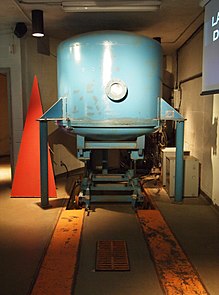This article includes a list of references, related reading, or external links, but its sources remain unclear because it lacks inline citations. (April 2009) |

Vacuum deposition is a group of processes used to deposit layers of material atom-by-atom or molecule-by-molecule on a solid surface. These processes operate at pressures well below atmospheric pressure (i.e., vacuum). The deposited layers can range from a thickness of one atom up to millimeters, forming freestanding structures. Multiple layers of different materials can be used, for example to form optical coatings. The process can be qualified based on the vapor source; physical vapor deposition uses a liquid or solid source and chemical vapor deposition uses a chemical vapor.[2]
- ^ "Daily events and images of the installation of the BBSO New Solar Telescope". Big Bear Solar Observatory. Retrieved 6 January 2020.
- ^ Quintino, Luisa (2014). "Overview of coating technologies". Surface Modification by Solid State Processing. pp. 1–24. doi:10.1533/9780857094698.1. ISBN 9780857094681.